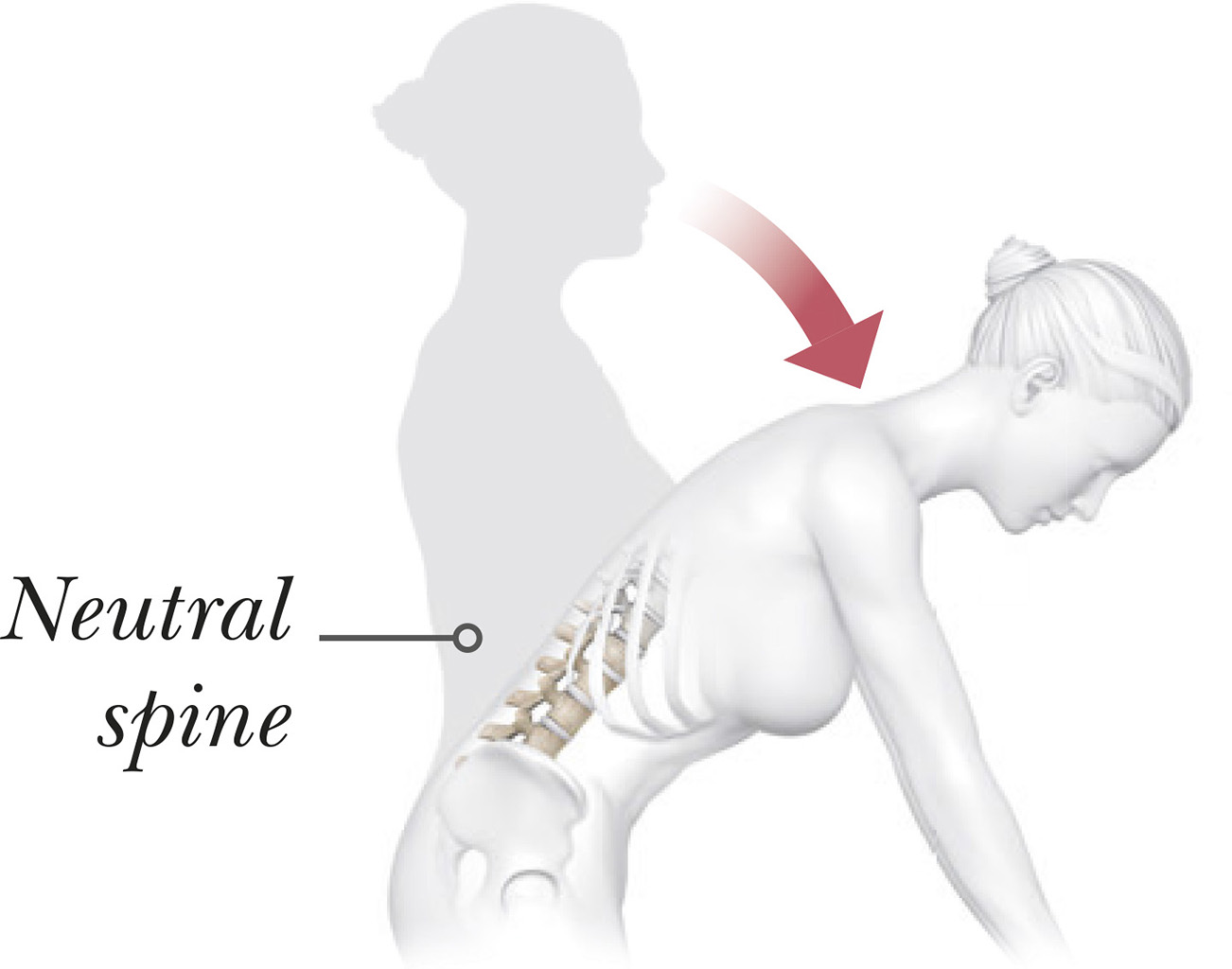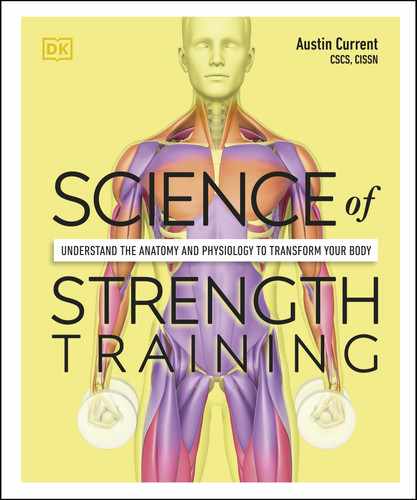terminology guide
The body’s joints facilitate an incredible and wide range of movements, and each movement is described using the illustrations on these pages. Throughout this book, instructions use terminology and directional terms that will help guide you in a specific stage of an exercise or the exercise as a whole, so it’s a good idea to mark this page for easy reference.

n Double-tap image to read the labels
ORIENTATIONS

n Double-tap image to read the labels
Shoulder
This complex joint has a wide range of movements in multiple planes. It can move the arm forward and backward and up and down at the side, as well as rotating at the shoulder joint itself.
flexion
Moving the arm forward at the shoulder.

extension
Moving the arm backward at the shoulder.

adduction
Moving the arm toward the body.

aBDuction
Moving the arm away from the body.

external rotation
Rotating the arm outward at the shoulder.

internal rotation
Rotating the arm inward at the shoulder.

Spine
As well as providing structural support for the upper body, the spine helps transfer loads between the lower and upper body. It can extend, flex, rotate, and flex to the side, as well as combinations of these.
extension
Bending at the waist to move the torso backward.

flexion
Bending at the waist to move the torso forward.

n Double-tap image to read the labels
rotation
Turning the trunk to the right or left on the midline.

side flexion
Bending the trunk to the right or left from the midline.

Elbow
The elbow is involved in any exercise using hand-held resistance, as well as specific arm movements.
extension
Straightening the arm, increasing the joint angle.

flexion
Bending the arm, decreasing the joint angle.

Wrist
The wrist should remain neutral (in straight alignment with the forearm) unless otherwise directed.
supination
Rotating the forearm so the palm faces up.

pronation
Rotating the forearm so the palm faces down.

Hip
The hip joint is capable of a wide range of motion in multiple planes, all involving a straight leg, as shown here.
adduction
Moving the thigh inward toward the midline.

abduction
Moving the thigh away from the midline.

external rotation
Rotating the thigh outward.

internal rotation
Rotating the thigh inward.

extension
Extending the thigh backward, straightening the body at the hip.

flexion
Moving the thigh forward, bending the body at the hip.

Knee
The knee has to be able to sustain loads of up to 10 times the body’s weight. Its main actions are flexing and extending, both of which are involved in lots of strength training exercises.
flexion
Bending at the knee, which decreases the joint angle.

extension
Straightening at the knee, which increases the joint angle.

Ankle
In strength training, the important movements of this joint involve its dorsiflexion and plantarflexion.
dorsiflexion
Bending at the ankle so that the toes point upward.

plantarflexion
Bending at the ankle so that the toes point downward.

